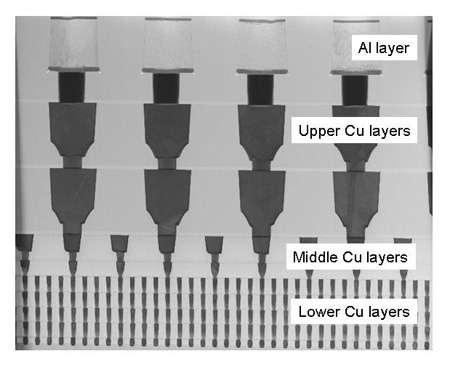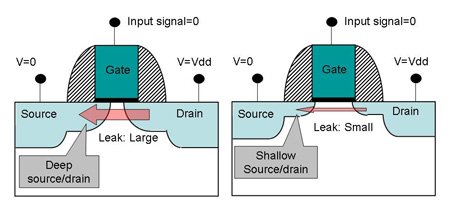Archived content
NOTE: this is an archived page and the content is likely to be out of date.
Fujitsu Develops Technology for Low-Power, High-Performance 45nm Logic Chips
Incorporates new annealing technology and multi-layer interconnect technology
Fujitsu Limited,Fujitsu Laboratories Ltd.
-
[1] International Technology Roadmap for Semiconductors (ITRS)
Known as ITRS, this roadmap for semiconductors is sponsored by five leading semiconductor manufacturing regions in the world: Japan, the United States, Europe, Korea, and Taiwan. The sponsoring organizations are the Japan Electronics and Information Technology Industries Association (JEITA), the United States Semiconductor Industry Association (SIA), the European Semiconductor Industry Association (ESIA), the Korean Semiconductor Industry Association (KSIA), and the Taiwan Semiconductor Industry Association (TSIA). For more information:http://www.itrs.net/about.html
About Fujitsu
Fujitsu is a leading provider of customer-focused IT and communications solutions for the global marketplace. Pace-setting device technologies, highly reliable computing and communications products, and a worldwide corps of systems and services experts uniquely position Fujitsu to deliver comprehensive solutions that create infinite possibilities for its customers' success. Headquartered in Tokyo, Fujitsu Limited (TSE:6702) reported consolidated revenues of 5.1 trillion yen (US$43.2 billion) for the fiscal year ended March 31, 2007. For more information, please see: www.fujitsu.com
About Fujitsu Laboratories
Founded in 1968 as a wholly owned subsidiary of Fujitsu Limited, Fujitsu Laboratories Limited is one of the premier research centers in the world. With a global network of laboratories in Japan, China, the United States and Europe, the organization conducts a wide range of basic and applied research in the areas of Multimedia, Personal Systems, Network, Peripherals, Advanced Materials and Electronic Devices. For more information, please see: http://jp.fujitsu.com/labs/en/
Technical Contacts
Silicon Technologies Development Lab.
![]() Phone: +81-42-532-1253
Phone: +81-42-532-1253
![]() E-mail: silicon-ask@ml.labs.fujitsu.com
E-mail: silicon-ask@ml.labs.fujitsu.com
Company:Fujitsu Laboratories Ltd.
Company names mentioned herein are registered trademarks or trademarks of their respective owners. Information provided in this press release is accurate at time of publication and is subject to change without advance notice.
Date: 18 June, 2007
City: Tokyo
Company:
Fujitsu Limited,
Fujitsu Laboratories Ltd.,
,
,
,

